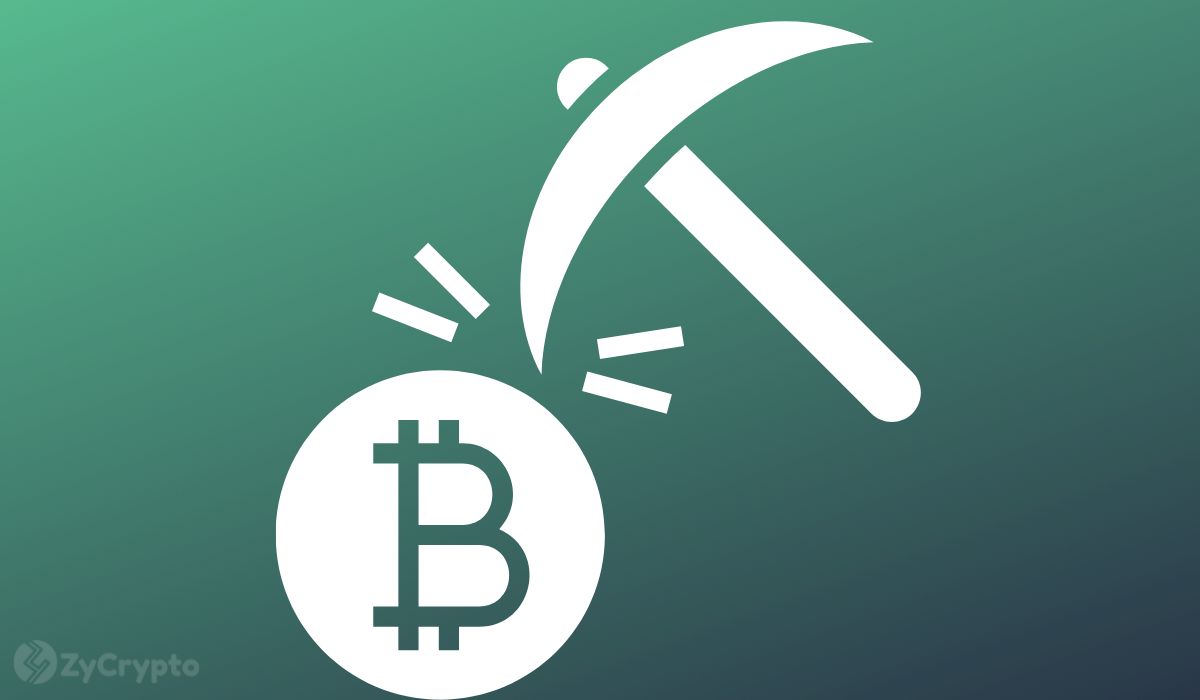2018-9-19 22:03 |
When Bitcoin launched in 2009, it became the world’s first cryptocurrency. By utilizing miners that contribute their excess computation power to validate a movement of funds, it allows the network to remain decentralized.
As the value of Bitcoin has increased over time, more and more individuals are now taking the mining plunge. In fact, at the time of writing in mid-2018, there are now approximately 10,000 individual nodes, each hoping to get their slice of the highly lucrative Bitcoin mining space.
However, competition is now ultra-fierce, meaning that if you are thinking about solo mining Bitcoin – you should first read our guide. We’ll start by explaining how the underlying Proof-of-Work mining algorithm works, followed by a discussion on why it is now becoming more difficult to mine on your own.
After that, if you still want to go ahead, we’ll give you a comprehensive step-by-step guide on what you need to do to get started. Let’s start by finding out just how Bitcoin mining works!
What is Bitcoin Mining and How Does it Work?Essentially, mining allows transactions to be verified on a peer-to-peer basis, meaning no centralized authority is involved. It is open to anyone that wants to contribute their excess computation power by hooking up a specialized hardware device to the network. In return, if miners are successful in confirming a block of transactions, not only do they receive a Bitcoin reward of 12.5 BTC, but they also receive all of the transaction fees that were included within the block.
There are many different ways that a blockchain can confirm a set of transactions and this is known as a consensus mechanism. Bitcoin uses a mechanism called Proof-of-Work, or PoW for short. The way PoW works is the underlying software creates a cryptographic algorithm that resembles a difficult mathematical puzzle. This randomly generated puzzle is so complex that it requires significant computational power to solve it.
When the Bitcoin and PoW system attempts to validate a block of transactions, it does so in a period of 10 minutes. During this time, each and every miner will use their device in an attempt to solve the puzzle. To do so, the mining device operates on a ‘trial and error’ basis, insofar that it attempts millions of potential answers to the puzzle every second. The first mining device (known as a node) that is successful in solving the sum is the subsequent winner in that specific block.
Source: Bitnodes.earn.com
As mentioned earlier, there are approximately 10,000 individual nodes that are all competing with each other to solve the puzzle first. In theory, the node that is able to generate the most computational power (known as hashing power) will stand the best chance of winning the mining reward, as it is able to generate more potential answers to the puzzle each second.
Therefore, mining is often referred to as an arms race, as those with the most powerful devices are often more successful in winning block rewards.
Let’s briefly find out why this is and how it might affect your chances of solo mining Bitcoin.
The Bitcoin Mining Arms RaceDuring the first few years of Bitcoin launching, the vast majority of mining was facilitated by simple GPU units. As the amount of miners in operation was minute in quantity, the underlying algorithm that had to be solved was significantly less difficult than it is today. This not only allowed miners to use inexpensive devices, but it also kept electricity costs at an absolute minimum.
However, as the value and real-world adoption of Bitcoin has grown over time, as have the amount of miners that are looking to enter the space. The result of this is that the algorithmic difficulty of the puzzle has increased exponentially, meaning that GPU devices can no longer compete.
Instead, GPUs have been replaced by highly powerful ASICs (Application-Specific Integrated Circuit), which have the ability to generate a significant amount of hashing power. At the time of writing in 2018, the most powerful Bitcoin ASIC device is the DragonMint T1, which can generate 16TH per second.
An even greater issue with the current state of play of Bitcoin mining is that the vast majority of success is dominated by a small number of mining pools. This is where individual miners pool their hashing power together in order to boost the likelihood that someone in the pool successfully mines a block. The members of the pool then divide the rewards between their members. The prevalence of mining pools has made it very difficult for solo miners to compete.
Essentially, this leaves you with two options. If you are interested in solo mining Bitcoin, then your odds of successfully mining a block are drastically lower than if you were to join a pool. However, if you are successful, you would receive the 12.5 BTC block reward in its entirety, along with all of the subsequent transaction fees.
On the other hand, if you are more interested in joining a pool, your chances of winning a block reward are significantly higher, but you will only receive a very small proportion (relative to the amount of hashing rate you contribute) of the reward. Moreover, most mining pools keep the transaction fees for themselves.
Nevertheless, we will now show you what you need when solo mining Bitcoin.
Solo Mining Bitcoin – HardwareTo get your Bitcoin solo mining journey on its way, you will first need to invest in a specialized hardware device. Don’t forget, the days of being able to mine Bitcoin with a basic GPU are over, so you will need to get yourself an ASIC.
First and foremost, there is no doubt that by purchasing the most powerful ASIC device available on the market, you will increase your chances of beating your fellow miners. The aforementioned DragonMint T1 costs in the region of $2,700, which is out of reach for many.
If financial resources do not stretch that far, then you will need to get a slightly less-powerful model. To give you an understanding of how much the most popular devices cost, along with their respective hashing rate power, take a look at the screenshot below.
Source: buybitcoinworldwide.com
As you will see, there is a correlation between the price and the amount of hashing power the ASIC device is able to produce.
Before making a purchase, it is important to remember that you should typically only ever buy from the manufacturer’s official website, or a website that is listed as an official vendor. You should be very cautious when purchasing a mining device second hand or from an unverified source. The reason for this is that the device may have been tampered with, meaning that the bad actor might be able to re-direct your hashing power.
So now that you know the requirements of hardware, let’s take a look at what software you will need.
Solo Mining Bitcoin – SoftwareWhen you purchase an ASIC hardware device, the vast majority of suppliers will provide you with the mining software. If this is the case, you should only ever use the software that is included with your device, rather than attempting to use a third party alternative.
You will need to install the relevant software file on to your desktop device and follow the on-screen instructions. At an absolute minimum you will need to enter the public address that you want your mining rewards sent to.
Mining software also allows you to play around with the underlying settings, which can include the amount of hours you want the device to mine, along with how much power you want the device to generate.
Before changing any fundamental settings, it is always worth checking the instructions that are provided by the manufacturer.
At this point in your mining endeavor, you should now have a specialized ASIC hardware device, as well as the required software installed. You can now sit back and let your mining device do all of the hard work! Let’s find out what kind of results you can expect.
What to Expect From Your EffortsIf you are looking to find out how long it will take you to successfully mine a block, or how much money you can make over a certain period of time, the answer will ultimately depend on a number of factors. Take a quick look at the bullet points below, which indicate some of the things that will influence your ability to make a profit:
How much hashing power is your ASIC device able to produce? How many ASIC devices do you have connected to the network? How many other nodes are currently on the network? How expensive are electricity costs in your country? What is the current difficulty rate set at? What is current value of Bitcoin?All of the above factors will determine your solo mining earning potential. Fortunately, there are now websites that allow you to enter your individual circumstances, subsequently giving you an estimate on profitability.
Solo Mining Bitcoin: The VerdictIf you have read our guide from start to finish, you should now have a good idea of the many factors that you need to consider prior to starting your solo mining journey. The current state of play in the Bitcoin industry is that the vast majority of block rewards are now won by the large mining pools.
As a result, solo mining is now a lot more difficult than it was during the early years of Bitcoin. Nevertheless, if you are still keen on giving it a go, just make sure that you consider the hashing power capabilities of the ASIC device you are buying. If it is inferior to other devices on the market, you are reducing your chances of success. Moreover you also need to consider the cost of electricity in the nation you are operating in, as this could be the difference between profit and loss.
The post Solo Mining Bitcoin and Is it Profitable? appeared first on UNHASHED.
origin »Bitcoin (BTC) на Currencies.ru
|
|















